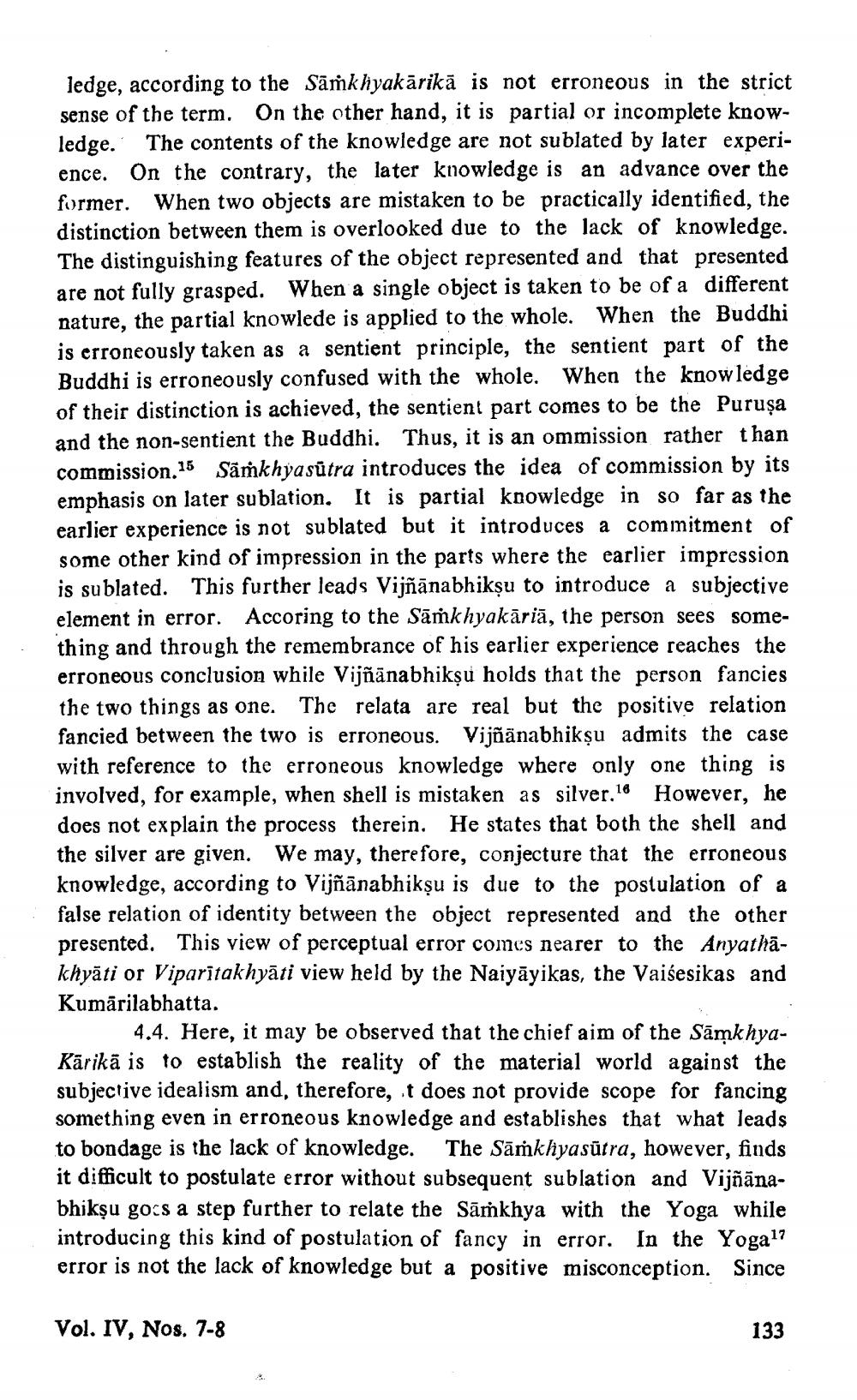________________
ledge, according to the Sāṁkhyakārikā is not erroneous in the strict sense of the term. On the other hand, it is partial or incomplete knowledge. The contents of the knowledge are not sublated by later experience. On the contrary, the later knowledge is an advance over the former. When two objects are mistaken to be practically identified, the distinction between them is overlooked due to the lack of knowledge. The distinguishing features of the object represented and that presented are not fully grasped. When a single object is taken to be of a different nature, the partial knowlede is applied to the whole. When the Buddhi is crroneously taken as a sentient principle, the sentient part of the Buddhi is erroneously confused with the whole. When the knowledge of their distinction is achieved, the sentient part comes to be the Purusa and the non-sentient the Buddhi. Thus, it is an ommission rather than commission. 15 Sãmkhyasūtra introduces the idea of commission by its emphasis on later sublation. It is partial knowledge in so far as the earlier experience is not sublated but it introduces a commitment of some other kind of impression in the parts where the earlier impression is sublated. This further leads Vijñānabhikṣu to introduce a subjective element in error. Accoring to the Sāṁkhyakāriā, the person sees something and through the remembrance of his earlier experience reaches the erroneous conclusion while Vijñānabhikṣu holds that the person fancies the two things as one. The relata are real but the positive relation fancied between the two is erroneous. Vijñānabhikṣu admits the case with reference to the erroneous knowledge where only one thing is involved, for example, when shell is mistaken as silver.18 However, he does not explain the process therein. He states that both the shell and the silver are given. We may, therefore, conjecture that the erroneous knowledge, according to Vijñānabhikṣu is due to the postulation of a false relation of identity between the object represented and the other presented. This view of perceptual error comes nearer to the Anyathākhyāti or Viparitakhyāti view held by the Naiyāyikas, the Vaisesikas and Kumārilabhatta.
4.4. Here, it may be observed that the chief aim of the SāmkhyaKārikā is to establish the reality of the material world against the subjective idealism and, therefore, it does not provide scope for fancing something even in erroneous knowledge and establishes that what leads to bondage is the lack of knowledge. The Sāṁkhyasūtra, however, finds it difficult to postulate error without subsequent sublation and Vijñānabhikṣu gocs a step further to relate the Sāṁkhya with the Yoga while introducing this kind of postulation of fancy in error. In the Yogal? error is not the lack of knowledge but a positive misconception. Since
Vol. IV, Nos. 7-8
133




